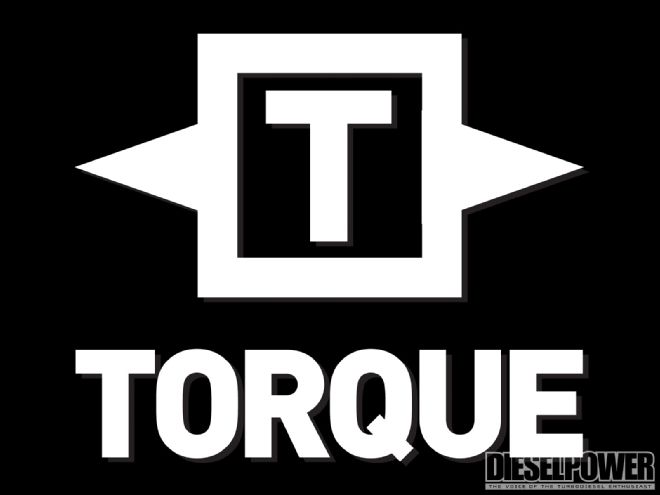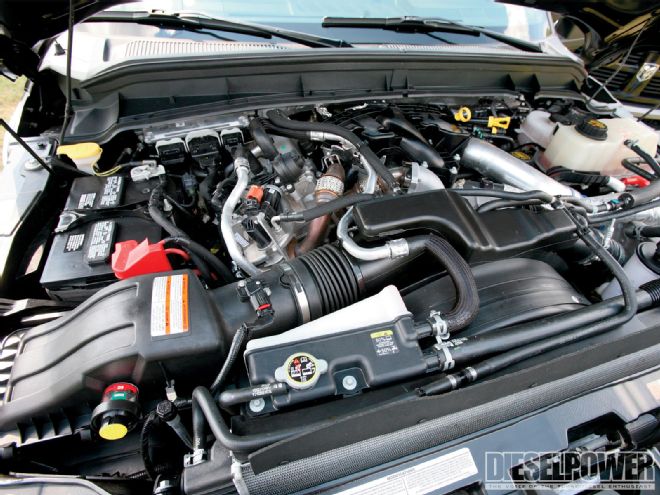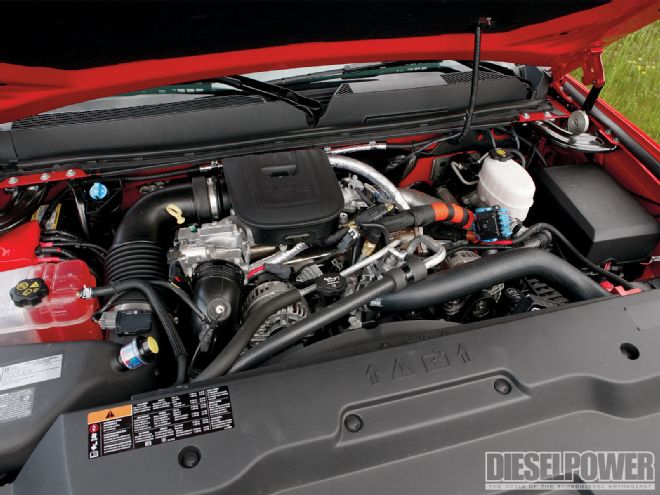The Ford vs. Chevy Horsepower War Rages On
'11 Power Stroke Key Features:
- 6.7L compacted graphite iron block and aluminum heads
- Garrett VGT turbo (twin compressor wheels)
- Bosch piezo CP4 pump-based common-rail injection
- B20 Biodiesel compatible
- Air-to-water intercooler
- All-new engine that shares nothing with outgoing 6.4L Power Stroke

| 1011dp The Ford Vs Chevy Horsepower War Rages On blue Oval
'11 Duramax LML Key Features:
- 6.6L iron block and aluminum heads
- Garrett VGT turbo (single compressor wheel)
- Bosch piezo CP4 pump-based common-rail injection
- B20 Biodiesel compatible
- Ninth injector used for DPF regeneration
- Higher-flow oil pump than '10 LMM engine

| 1011dp The Ford Vs Chevy Horsepower War Rages On bowtie
If you aren't old enough to have lived through the muscle car era of the '60s-fear not. You can stop dreaming about the good old days right now. The Torinos, Chevelles, and Road Runners of that bygone era have nothing on the modern-day muscle offered by the diesel pickups coming out of Detroit. You are, in fact, living in the good old days of horsepower and torque-right now.
In last month's issue we tested all six '11 diesel trucks ("2011 Pickup Truck Shootout") and showed how GM's new LML 6.6L Duramax engine laid waste to the 6.7L Cummins and 6.7L Power Stroke diesels during our performance testing. The Duramax's advantage (47 hp and 115 lb-ft more than Ram, and 7 hp and 30 lb-ft more than Ford) didn't sound huge going into the test-especially compared to the power numbers diesel enthusiasts are used to-but in practice, the '11 GM trucks felt like they were in a different category altogether.
Now that Ford's packing its own in-house-built diesel engine, it isn't about to forfeit the horsepower war. So, to counter GM's attack, Ford has announced it's now uploading Super Dutys with a new calibration that will raise the 6.7L's power output to 400 hp and 800 lb-ft of torque. The new power increase requires no changes to the engine hardware but instead relies on "stretching of the fuel map," according to Chief Engineer of Powertrain Integration Adam Gryglack. Gryglack also reports that the new calibration does not affect urea fluid consumption and only increases the engine's exhaust gas temperature and cylinder pressure slightly. In fact, he said Ford proved this higher output calibration in the new engine's initial development.
That leaves us with only two questions: Is 3 hp and 35 lb-ft of torque enough to make the Super Duty quicker than the Silverado? And, Chrysler, are you paying attention?
When will you launch your Cummins counteroffensive?


